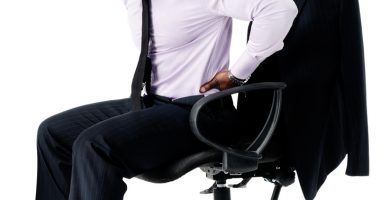Runner’s Knee
So now the sun is out, you’ve finally found the motivation to get out on the road and start running. Maybe you’ve even gone a step further and signed up for that upcoming half marathon or marathon. After putting in all this hard work the last thing you need is to be stopped in your tracks by injury.
Also known as ‘Patellofemoral Pain Syndrome’, Runner’s Knee is the most common injury that affects runners. This is because the stress of running can cause irritation where the kneecap (patella) rests on the thighbone.
Forty-two percent of all overuse injuries affect the knee joint. Runner’s Knee can affect one or both knees. It strikes mostly younger, recreational runners and twice as many women as men (due to their wider pelvis). Although it is commonly known to affect runners it can also affect other athletes, manual labourers etc.
Symptoms
Symptoms include tenderness behind or around the patella, usually toward its centre. You may feel pain toward the back of the knee, a sense of cracking or that the knee is giving out. Steps, hills, and uneven terrain can aggravate Runner’s Knee.
Causes
Runner’s Knee can have muscular causes such as tight hamstrings and calf muscles that put pressure on the knee, or weak quadriceps muscles can cause the patella to track out of alignment. Just the repetitive force of a normal running stride alone can be enough to provoke an attack.
It could also be a biomechanical problem—the patella may be larger on the outside than it is on the inside, it may sit too high in the femoral groove, or it may dislocate easily. Also, worn cartilage in the knee joint reduces shock absorption, high-arched feet provide less cushioning, and flat feet or knees that turn in or out excessively can pull the patella sideways.
- Wear supported shoes
- Run on softer even surfaces
- Strengthen your quadriceps to improve patella tracking
- Stretch your hamstrings and calves to prevent over-pronation (flat feet)
- Keep mileage increases less than 10 percent per week
- Gradually increase hill work in your program
Treatment
At the first sign of pain, cut back your mileage. The sooner you lessen the knee’s workload, the faster healing begins. Avoid knee-bending activities, canted surfaces, and downward stairs and slopes until the pain subsides. As you rebuild mileage, use a smaller stride on hills.
If the pain persists your therapist (Osteopath or Physiotherapist) can help. Following a full assessment including a detailed case history which will help determine the cause and aggravating factors. Hands on treatment can help you reduce the tension in tight soft tissue, improve mobility in restricted joints and provide take-home exercises and advice. If needed taping may also be used to help reduce the strain on your knee and allow the healing process to continue.
For more information about running injuries:
http://www.runnersworld.com/
http://running.about.com/
http://www.letsrun.com/
About the Author: https://avenueclinic.co.uk/?p=1882





